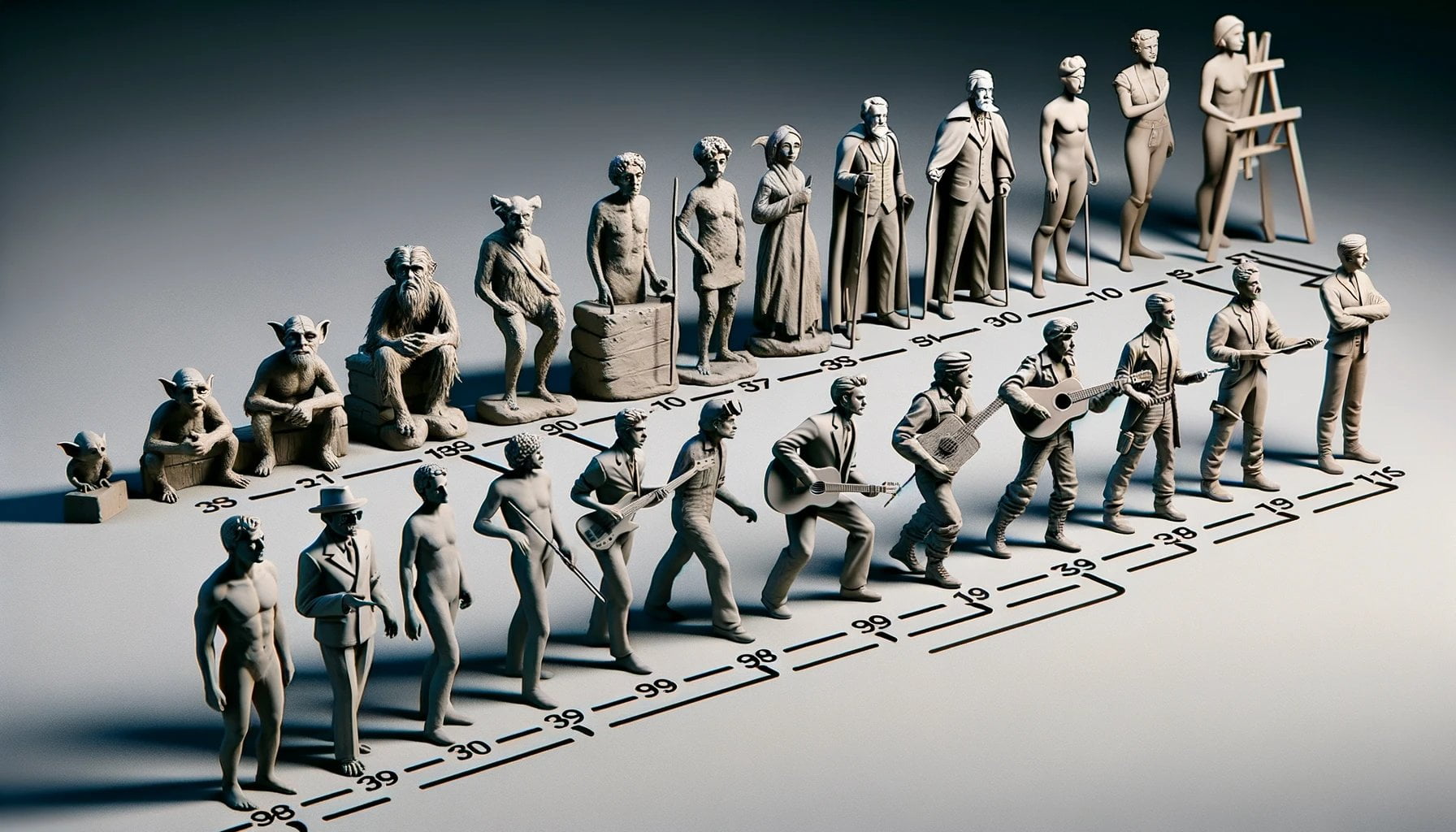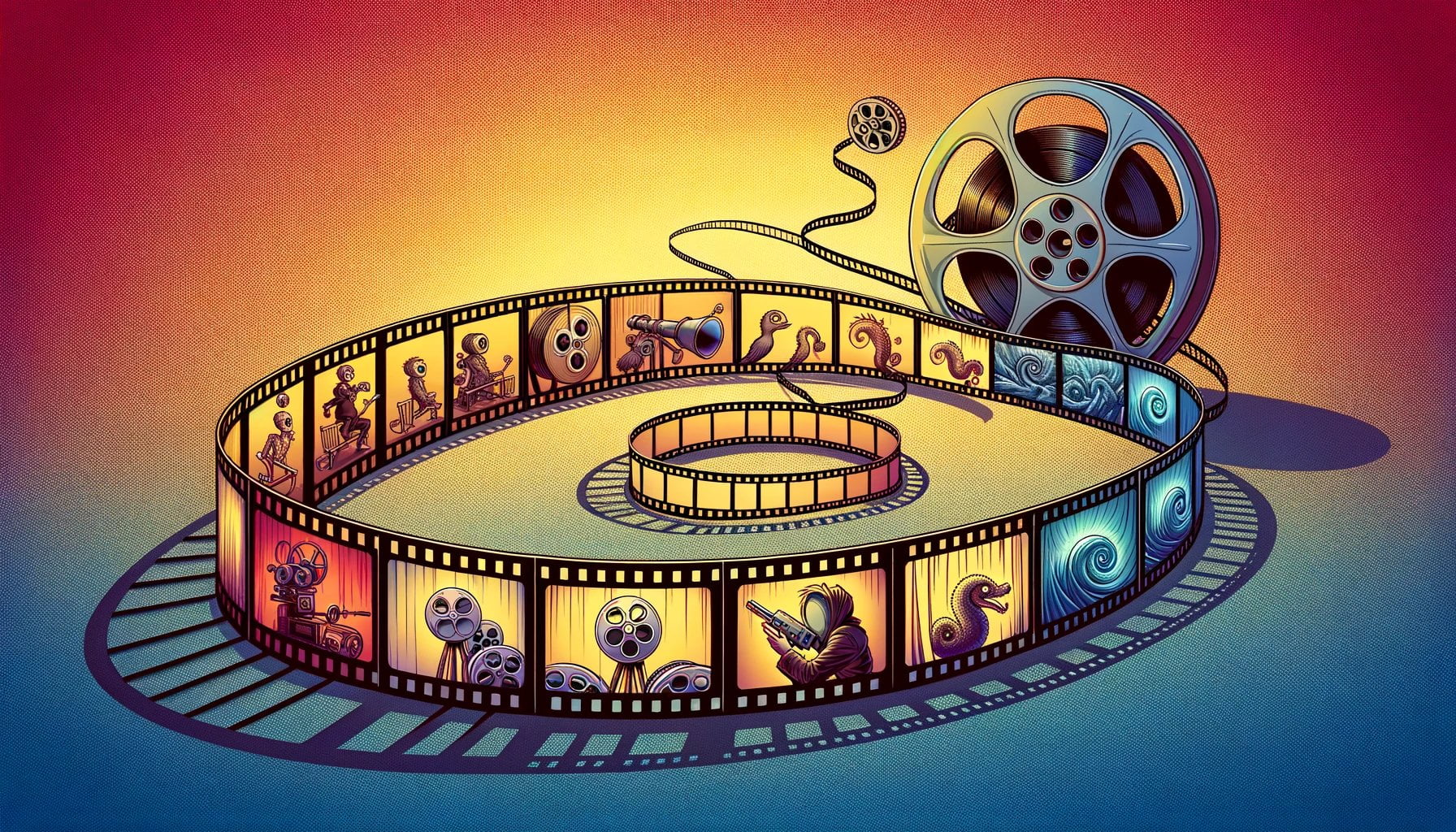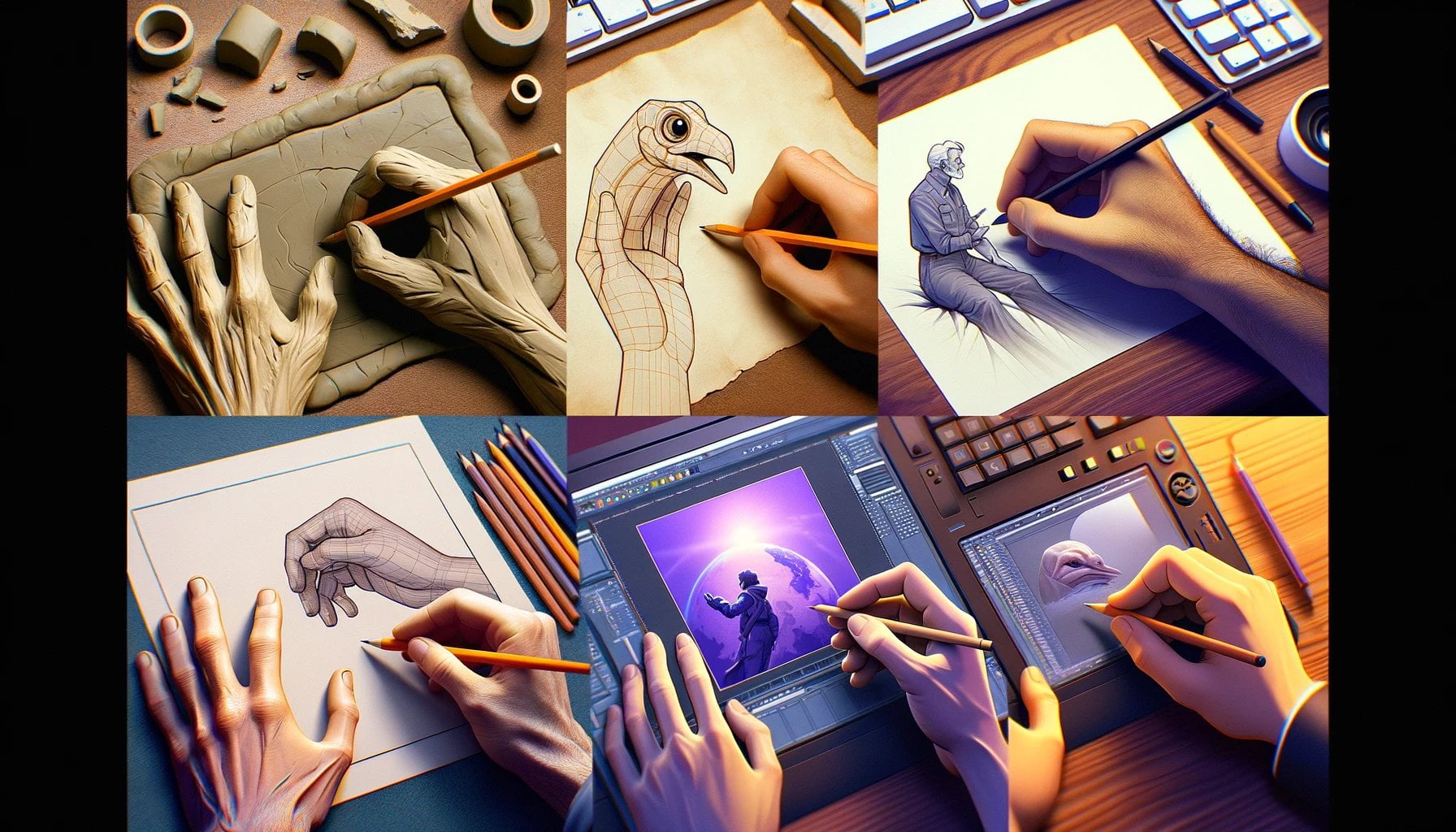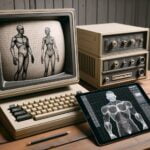Embarking on a mesmerizing expedition through time, we delve into the captivating world of 3D animation. From its humble beginnings to its thriving present, the evolution of 3D animation is a story that spans decades and has forever transformed the way we experience entertainment. Join us on this spellbinding journey as we unravel the milestones, technological advancements, and creative breakthroughs that have shaped the remarkable art form of 3D animation.
Key Takeaways:
- 3D animation originated in the mid-20th century alongside the rise of computerized graphics.
- Clay animation, or ‘Claymation,’ is considered the earliest form of 3D animation.
- CGI and 3D animation have evolved since the 1990s, becoming prominent in films and TV.
- VeggieTales was the first 3D animated TV show, and Toy Story was the first 3D CGI animated film.
- Renowned 3D animation studios include Walt Disney, Pixar, Illumination Entertainment, Dream Works, and Warner Bros.
- 3D animation has become a mainstream art form, often combined with human actors in movies like Avatar.
- The future of animation holds even more possibilities for advancements in 3D animation technology.
3D Animation History

The Early Beginnings of 3D Animation
When we think of animation, the first thing that comes to mind is often the classic 2D animations that have been around for over a century. However, it wasn’t until the mid-20th century that 3D animation started to become a reality. With the advent of computer technology, artists and engineers began to explore the possibilities of bringing three-dimensional objects to life on screen.
One of the earliest forms of 3D animation was clay animation, also known as ‘Claymation.’ This technique, which originated in the early 1900s, involved sculpting characters and objects out of clay and capturing their movement frame by frame. It paved the way for later advancements in 3D animation technology, showcasing the potential of creating lifelike characters and environments.
The Rise of CGI and 3D Animation
The true breakthrough in 3D animation came in the 1990s with the development of computer-generated imagery (CGI). This revolutionary technique allowed animators to create realistic and immersive worlds entirely within the digital realm.
In the early years of CGI, it was primarily used in commercials and short films, but its potential quickly caught the attention of Hollywood. The first 3D animated TV show, VeggieTales, hit the small screen in 1993, showcasing the power of computer-generated animation to captivate audiences of all ages.
However, it was the release of Toy Story, the first full-length 3D CGI animated film, in 1995 that truly changed the landscape of animation. Produced by Pixar Animation Studios in collaboration with Disney, Toy Story marked a turning point in the history of 3D animation. Its success not only solidified the viability of computer-generated animation but also paved the way for future animated feature films to embrace the digital realm.
The Impact of 3D Animation Studios
Since the success of Toy Story, numerous 3D animation studios have emerged, pushing the boundaries of what’s possible in the world of animation. Companies like Walt Disney, Pixar, Illumination Entertainment, DreamWorks, and Warner Bros. have become household names, creating memorable characters and captivating stories through the power of 3D animation.
The integration of 3D animation with live-action films has further expanded the possibilities of storytelling. Movies like Avatar have seamlessly blended 3D animation with human actors, creating breathtaking worlds and characters that were previously unimaginable.
The Future of 3D Animation
Looking ahead, the future of 3D animation is brimming with excitement and possibilities. As technology continues to advance, animators will be able to create even more realistic and immersive experiences. With the advent of virtual reality (VR) and augmented reality (AR), audiences will soon be able to step into animated worlds and interact with animated characters like never before.
Beyond entertainment, 3D animation has also found applications in various industries such as architecture, medicine, and education. Its ability to visualize complex concepts and simulate real-life scenarios makes it an invaluable tool in these fields.
In conclusion, the evolution of 3D animation has been a fascinating journey through history. From the early days of clay animation to the rise of CGI and the establishment of iconic animation studios, this art form has grown leaps and bounds. As we continue to push the boundaries of technology and creativity, the future of 3D animation holds even more advancements and possibilities. So buckle up and get ready to embark on a captivating ride through the world of 3D animation!
The history of animation is a fascinating journey through time and creativity. Explore the evolution of this art form by clicking on this animation history link.
Impact of Pixar and the Rise of 3D Animated Feature Films
From its humble beginnings to its current state of innovative storytelling, the impact of Pixar and the rise of 3D animated feature films have significantly shaped the world of animation. This article delves into the journey of 3D animation, highlighting the pivotal role played by Pixar and its groundbreaking film, Toy Story.
The Technology Behind the Magic:
In the mid-20th century, as computer technology advanced, the concept of 3D animation started to become a reality. However, it wasn’t until the 1990s that a breakthrough occurred with the development of computer-generated imagery (CGI). This technology paved the way for the birth of the first full-length 3D CGI animated film, Toy Story, released by Pixar in 1995.
Toy Story: A Game-Changer in Animation:
With Toy Story, Pixar revolutionized the animation industry forever. It was the first feature-length film to utilize 3D animation, marking a significant milestone in the history of animation. This imaginative tale of toys coming to life captured the hearts of audiences worldwide, breaking box office records and establishing Pixar as an animation powerhouse. The success of Toy Story opened doors for countless future 3D animated films.
The Rise of Pixar:
Following the success of Toy Story, Pixar continued to push the boundaries of animation with each new release. The studio expanded technologically and creatively, captivating audiences with unforgettable stories and breathtaking visuals. Their films, including The Incredibles, Finding Dory, Soul, and Inside Out, have garnered critical acclaim and numerous awards, solidifying Pixar’s position as a leader in the 3D animation industry.
The Role of Stylized Design:
Stylized design has played a crucial role in the evolution of 3D animated films. Drawing inspiration from traditional hand-drawn animation, artists have developed unique aesthetics to bring characters and worlds to life. Pixar, in particular, has mastered the art of stylization, creating visually stunning films that evoke emotions and immerse audiences in extraordinary storytelling.
The Disney-Pixar Collaboration:
In 2006, Pixar was purchased by Disney, a partnership that has been instrumental in the success of Disney’s animated feature films. The collaboration between these two giants of animation has brought forth incredible stories and characters, merging Disney’s legacy with Pixar’s innovative techniques. This union has resulted in beloved films such as Coco, Moana, and Frozen, all of which owe their visual magic to the advancements made by Pixar.
The Expansion of 3D Animation:
Beyond the realm of entertainment, the impact of 3D animation has extended to other industries. Its integration with live-action films has expanded the possibilities of storytelling, allowing filmmakers to create seamless worlds that captivate audiences. Furthermore, 3D animation has found applications in industries such as architecture, medicine, and education, enhancing visualization and communication in various fields.
Key Takeaways:
– Pixar’s Toy Story marked a pivotal moment in the history of animation, being the first feature-length film with 3D animation.
– Pixar’s advancements in technology and storytelling have set the standard for 3D animated feature films.
– Stylized design, inspired by traditional hand-drawn animation, plays a vital role in creating visually captivating 3D animated films.
– The collaboration between Pixar and Disney has resulted in the production of numerous successful animated films.
– 3D animation has expanded beyond entertainment, finding applications in industries such as architecture, medicine, and education.
As we look back on the captivating journey of 3D animation, it’s undeniable that Pixar and the rise of 3D animated feature films have left an indelible mark on the industry. From the magical world of Toy Story to the cutting-edge techniques of today, the evolution of 3D animation continues to ignite our imaginations and push the boundaries of what is possible in the realm of storytelling.
The Integration of 3D Animation in Various Industries
In today’s digital age, 3D animation has become an integral part of numerous industries, revolutionizing the way we interact with visual content. From film and television to video games and advertising, the integration of 3D animation has transformed the possibilities of storytelling, marketing, and product development. Let’s dive into the fascinating journey of how this technology has influenced various industries.
Film and Television
One of the most prominent areas where 3D animation has made a significant impact is the film and television industry. With advancements in computer-generated imagery (CGI), filmmakers can create realistic and visually stunning worlds that captivate audiences. From breathtaking animated features to mind-bending visual effects, 3D animation has become a powerful tool for filmmakers to bring their visions to life.
The integration of 3D animation with live-action films has expanded the possibilities of storytelling, blending the boundaries between reality and fantasy. Films like “Avatar” and “Gravity” have pushed the boundaries of visual effects and immersion, creating captivating cinematic experiences. Moreover, the development of virtual production techniques, such as using real-time rendered environments, has opened up new avenues for filmmakers to craft compelling narratives.
Video Games
Another industry that has been greatly impacted by the integration of 3D animation is the video game industry. With advancements in technology, video game developers can create immersive and realistic gaming experiences. From lifelike character animations to dynamic and interactive environments, 3D animation plays a crucial role in captivating players and enhancing gameplay.
3D animation allows game designers to create richly detailed worlds, complete with realistic physics and fluid movements. Whether it’s the lifelike facial expressions of characters or the seamless transitions between actions, 3D animation brings games to life, drawing players into a captivating virtual realm.
Advertising
The advertising industry has also embraced 3D animation as a powerful marketing tool. With the ability to create visually appealing and captivating content, advertisers can effectively communicate their brand’s message to consumers. 3D animation allows for the creation of stunning product visualizations, demonstrating the features and benefits in a visually engaging manner.
Whether it’s showcasing the intricate details of a new car model or presenting a product in a dynamic and engaging way, 3D animation helps advertisers catch the viewer’s attention and leave a lasting impression. Additionally, the versatility of 3D animation allows for creative storytelling, enabling advertisers to convey complex ideas in a concise and visually appealing manner.
Architecture and Engineering
The integration of 3D animation has significantly impacted the fields of architecture and engineering. Through the use of 3D modeling and animation, architects and engineers can visualize and present their designs in a more comprehensive and realistic manner. 3D animation allows for the creation of detailed virtual walkthroughs, helping clients and stakeholders better understand the spatial layout and intricacies of a project.
By utilizing 3D animation, architects can showcase how natural light interacts with the building, simulate structural movements, and present different design options. This technology not only enhances the communication between architects, engineers, and clients but also aids in problem-solving and decision-making processes.
Product Development and Marketing
In various industries, including Product Development and Marketing, 3D animation has become an invaluable tool for showcasing products and bringing concepts to life. By creating realistic 3D visualizations, companies can effectively present prototypes, demonstrate product functionality, and highlight key features to potential customers.
Whether it’s creating a virtual tour of a new housing development or visualizing the inner workings of a complex machine, 3D animation enables companies to market their products with clarity and impact. By providing a visually stunning and interactive experience, 3D animation helps companies stand out in a competitive market and effectively engage their target audience.
Key Takeaways:
- Film and television have embraced 3D animation, blending the boundaries between reality and fantasy, and pushing the limits of visual effects.
- In the video game industry, 3D animation creates immersive gaming experiences, enhancing gameplay and captivating players.
- 3D animation serves as a powerful marketing tool in the advertising industry, allowing for visually appealing and engaging content.
- In the fields of architecture and engineering, 3D animation aids in visualizing and presenting designs, facilitating effective communication and decision-making.
- 3D animation helps in product development and marketing, enabling companies to showcase products, visualize concepts, and engage customers with realistic visualizations.
The integration of 3D animation in various industries has transformed the way we experience visual content, offering limitless possibilities for storytelling, design, and marketing. As technology continues to advance, we can expect even more exciting and innovative applications of 3D animation, further enhancing our interactions with the digital world.
Latest Trends and Future Possibilities in 3D Animation
With the rapid advancements in technology and the ever-growing demand for captivating visual experiences, 3D animation has become an essential tool in various industries. As an experienced 3D animator, I have witnessed the evolution of this art form firsthand, and I am excited to explore the latest trends and future possibilities in 3D animation. So let’s dive in and discover what lies ahead in the world of 3D animation.
Character Design Takes Center Stage
In the coming years, character design will be at the forefront of 3D animation. Advancements in 3D modeling tools have made it easier than ever to bring characters to life, allowing animators to create more expressive and engaging personalities. Mastering 3D modeling will be crucial for businesses that want to stay ahead of the curve and create memorable characters that resonate with their audience.
Innovations in Lighting and Shadows
Lighting and shadows play a vital role in creating realistic and immersive animations. In the future, we can expect to see significant innovation in this area, with the use of dynamic lighting and shadowing techniques. These advancements will enhance the visual quality of 3D animations, making them even more captivating and believable.
The Importance of Rigging
Rigging, the process of creating a digital skeleton for a 3D model, will continue to be important for flexible and controlled animations. By creating a well-structured rig, animators can achieve smoother and more natural movements, adding an extra layer of realism to their creations. As technology progresses, we can anticipate advancements in rigging tools and techniques that will empower animators to bring their visions to life with even more precision and ease.
Creating Believable Facial Expressions
One area where significant innovation can be expected is in the realm of creating believable facial expressions in 3D animation. As technology improves, animators will have access to more advanced tools and techniques to capture and convey emotions through facial animations. This will bring characters to life in new and exciting ways, allowing for deeper and more nuanced storytelling.
The Rise of Motion Capture Technology
Motion capture technology has already had a profound impact on the world of animation, and its influence will only continue to grow in the future. By capturing the movements of real actors and applying them to 3D models, animators can create more realistic and expressive animations. This technology will aid in bridging the gap between the virtual and physical world, resulting in even more immersive and engaging experiences.
Continuous Evolution: A Fascinating Journey
The history of 3D animation has been marked by a continuous evolution and has now become an integral part of the entertainment industry. CGI and 3D animation methods have become essential in film and television, allowing filmmakers to create realistic and visually stunning worlds. The integration of 3D animation with live-action films has expanded the possibilities of storytelling, blurring the boundaries between reality and fantasy.
Latest Trends in Animation
In addition to discussing future possibilities, it’s important to touch on the latest trends in animation. Currently, there is a focus on experimental and open-minded 3D animations that push the boundaries of creativity. Hyper-realistic CGI, psychedelic animation, flat style characters, and custom mascot characters are some of the popular trends emerging in the field. Moreover, there is a noticeable shift towards style over realism, with various industries exploring new ways to bring their visions to life.
Key Takeaways:
- Character design will be a key focus in 3D animation, utilizing advancements in 3D modeling tools to create engaging and realistic characters.
- Innovations in lighting and shadows will enhance the visual quality of 3D animations, creating more immersive experiences.
- Rigging will continue to be important for flexible and controlled animations, bringing an extra layer of realism to animated characters.
- Future advancements in facial expression technology will enable animators to create even more believable and emotionally resonant characters.
- Motion capture technology will play an increasingly significant role in creating realistic and expressive animations.
- The history of 3D animation highlights its continuous evolution, with CGI and 3D animation methods becoming essential in the entertainment industry.
- The latest trends in animation include a focus on experimental and open-minded 3D animations, hyper-realistic CGI, psychedelic animation, flat style characters, and custom mascot characters.
- There is a trend towards style over realism in 3D animation, with various industries exploring new ways to bring their visions to life.
As we look to the future, the possibilities in 3D animation are boundless. With advancements in technology and the ever-expanding creative landscape, we can expect to see even more breathtaking and immersive experiences. Whether it’s in the realm of character design, lighting, rigging, facial expressions, or motion capture, 3D animation continues to push boundaries and captivate audiences. So fasten your seatbelts, because the journey of 3D animation is far from over.

FAQ
Q1: When did 3D animation start to develop?
A1: 3D animation started to develop with the move towards fully computerized graphics in the middle of the 20th century.
Q2: What is considered to be the first style of 3D animation?
A2: Clay animation, also known as ‘Claymation,’ is believed to be the first 3D animation style, which originated in the early 20th century.
Q3: What were the first 3D animated TV show and film?
A3: The first 3D animated TV show was VeggieTales, released in 1993, and the first 3D CGI animated film was Toy Story, released in 1995.
Q4: Which studios are popular for 3D animation?
A4: Some popular 3D animation studios include Walt Disney, Pixar, Illumination Entertainment, DreamWorks, and Warner Bros.
Q5: In which industries is 3D animation used?
A5: 3D animation is used in industries such as film, television, video games, advertising, architecture, and engineering.
- Red Cloud, NE: Discover Willa Cather’s Legacy - April 11, 2025
- Remember Old Social Media Sites? Their Rise and Fall - April 11, 2025
- How many days till Feb 3?Accurate Countdowns & Tools - April 11, 2025
















